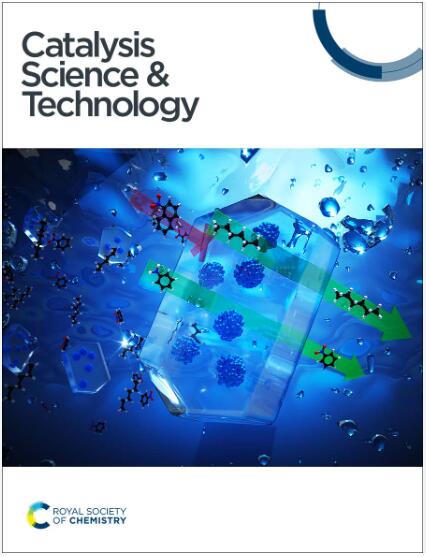Accelerating the identification of the rate controlling steps by conducting microkinetic modeling on surrogate networks†
IF 4.4
3区 化学
Q2 CHEMISTRY, PHYSICAL
引用次数: 0
Abstract
Identifying the rate-controlling steps in an unknown reaction network can be time-consuming due to its inherent complexity. Here we present a strategy to simplify this process by focusing expensive barrier calculations on significant elementary steps. The strategy is constructed by determining significant elementary steps using the degree of rate control data, which is derived from microkinetic modeling calculations performed on surrogate networks, which are a series of networks generated by assigning fictitious values to unknown barriers while all the reaction energies are computed using density functional theory. The barriers for significant elementary steps are then calculated iteratively to refine the network. We demonstrate this strategy for the reaction of Fischer–Tropsch synthesis, which has already been extensively studied in our previous work. Applying the strategy, we identified the most rate-controlling step, achieving a 77% reduction in the number of transition state calculations compared to traditional methods. Additionally, a detailed analysis of the strategy reveals the correlation between the parameters in the strategy and its performance. We validate the practicability of the strategy by applying it onto testing networks and the potential limitations of the strategy are also discussed.
通过对代理网络进行微动力学建模来加速速率控制步骤的识别
由于其固有的复杂性,确定未知反应网络中的速率控制步骤可能是耗时的。在这里,我们提出了一种策略,通过将昂贵的势垒计算集中在重要的基本步骤上来简化这一过程。该策略是通过使用速率控制数据的程度来确定重要的基本步骤来构建的,该数据来源于在代理网络上执行的微动力学建模计算,代理网络是通过为未知势垒分配虚拟值而生成的一系列网络,而所有的反应能量都是使用密度泛函理论计算的。然后迭代计算重要基本步骤的障碍,以改进网络。我们在费托合成反应中证明了这一策略,这在我们之前的工作中已经得到了广泛的研究。应用该策略,我们确定了最具速率控制的步骤,与传统方法相比,将过渡状态计算的数量减少了77%。此外,对该策略进行了详细的分析,揭示了策略中参数与绩效之间的相关性。我们通过将该策略应用于测试网络来验证该策略的实用性,并讨论了该策略的潜在局限性。
本文章由计算机程序翻译,如有差异,请以英文原文为准。
求助全文
约1分钟内获得全文
求助全文
来源期刊

Catalysis Science & Technology
CHEMISTRY, PHYSICAL-
CiteScore
8.70
自引率
6.00%
发文量
587
审稿时长
1.5 months
期刊介绍:
A multidisciplinary journal focusing on cutting edge research across all fundamental science and technological aspects of catalysis.
Editor-in-chief: Bert Weckhuysen
Impact factor: 5.0
Time to first decision (peer reviewed only): 31 days
 求助内容:
求助内容: 应助结果提醒方式:
应助结果提醒方式:


